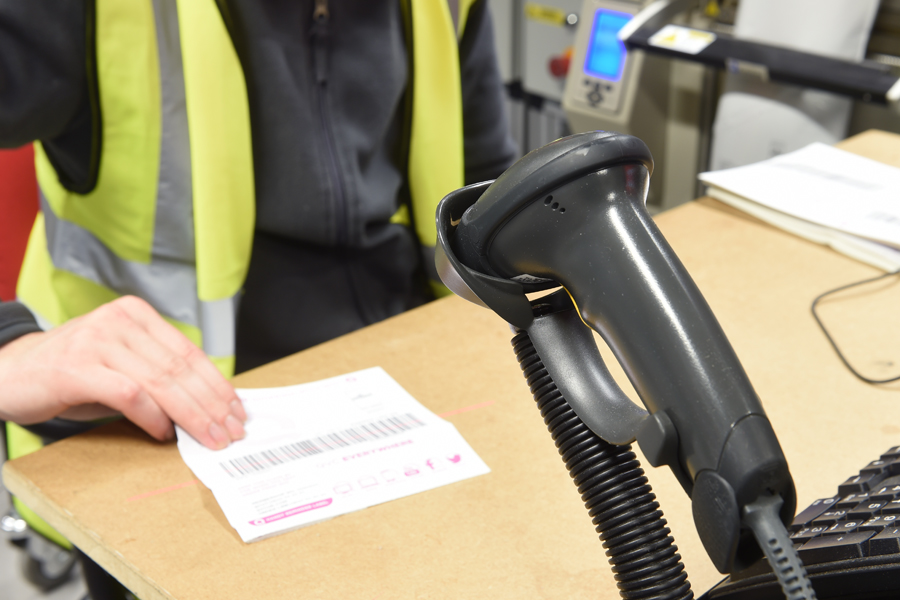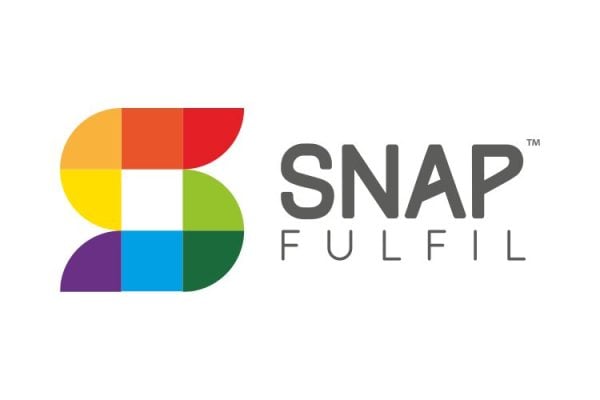 With the busy Q4 Black Friday and Christmas selling season well behind us, now is a great time of year to review your warehouse operations and think about how to streamline your processes for the peak season in 2017. With that in mind I talked to David Carroll, Managing Director of Conveyor Networks to find out more about their Automation and Software solution
With the busy Q4 Black Friday and Christmas selling season well behind us, now is a great time of year to review your warehouse operations and think about how to streamline your processes for the peak season in 2017. With that in mind I talked to David Carroll, Managing Director of Conveyor Networks to find out more about their Automation and Software solution
Conveyor Networks offer sourcing and installation of warehouse conveyor systems and their own imio software to make running your warehouse a breeze.
Being one themselves, Conveyor Networks understand the needs of small to medium sizes businesses and so, unlike many solutions, Conveyor Networks don’t make you buy a hugely complex and expensive solution way beyond your needs. They offer a range of apps that you can pick to build an affordable solution to solve the problems you have today, enabling the solution to grow, and become more complex as your business develops.
Here’s what David had to say:
What does Conveyor Networks do?
Conveyor Networks is a UK-based systems integrator and warehouse solutions provider founded in 2009 by myself and Geoff Wooding. Working from design and build through to servicing and maintenance, the company offers retail and ecommerce businesses of all sizes, best-in-class warehouse software and automation solutions.
Conveyor Networks engineer their own software called “imio” – a modular warehouse management system for each process in the warehouse. Smaller customers e.g. marketplace retailers can take the individual apps that solve their problems such as independent carrier integrations and packing applications rather than having to commit to a complete system.
Demand for imio software has grown to the extent that it is a separate sister company to Conveyor Networks. imio Software Solutions was launched in January 2017.
Why would someone use Conveyor Networks over competitors?
We have a unique understanding of both software and hardware for warehouse applications, we integrate both. We are a one stop shop for automation, controls software, warehouse management software, and post-sales service and support.
We are also an SME, so we have the advantage of being flexible and able to work to much shorter lead times than the larger providers. Yet we have the internal expertise and external partnerships to allow us to project manage and build bespoke, needs based solutions where necessary.
We provide the best fit for business and budget requirements.
What would your ideal customer look like?
Our ideal customer is an ecommerce business that’s at the stage where their manual systems (e.g. order picking, packing and despatch) are overloaded to the point where it impacts on customer service and jeopardises repeat business (and not just at Peak). When a business reaches this stage of their lifecycle the potential benefits from investing in automation or imio software have an immediate, visible impact and there will be demonstrable ROI.
As an SME we understand the importance of cash flow and the concerns that raising a large sum of CAPEX can cause. We aim to moderate these concerns with a range of scalable solutions and finance plans if required.
Which platforms do you support or integrate with?
imio’s API has been developed to integrate with all business critical systems that drive an ecommerce business forward. imio software integrates with host ERP, WMS, CMS accounting systems and all order management software systems.
imio’s software platform also offers single or multiple integrations with marketplaces (Amazon, eBay etc.) and individual carriers including: Royal Mail, UPS, Tuffnalls, Hermes, Yodel, DHL, DPD, FedEx, and UK Mail. We are adding to our integration portfolio all the time.
What are you goals for 2017?
The focus for Conveyor Networks this year is to support ecommerce grass roots businesses who are dipping their toes in the world of automation.
Examples of common scenarios include:
- Retailers taking between 3,000 and 6,000 orders per day. With these volumes the case for warehouse automation becomes much stronger. In this case a simple conveyor system or carton filling system speeds up processes and reduces bottlenecks in a way that having greater numbers of people doesn’t.
- If a business is still at the stage where orders are much lower e.g. 100 per day but tend to triple (or more) in Peak, manual paperwork processing such as printing invoices and carrier compliant labels is more of an issue.
 Warehouse software can make a significant contribution to manual operations, through its ability to join up separate processes, improve security, reduce errors and speed everything up. For example, the drawn out process of matching a product to an order, designing and printing the correct label and notifying a carrier can be transformed with a simple application to link and automate these processes.
Warehouse software can make a significant contribution to manual operations, through its ability to join up separate processes, improve security, reduce errors and speed everything up. For example, the drawn out process of matching a product to an order, designing and printing the correct label and notifying a carrier can be transformed with a simple application to link and automate these processes.
We pride ourselves on our software being simple to use and because it’s been developed to work with automation, any integration with machines or other software is straightforward.
Case study
RangePlus – packing software and automation
Established in 2013 by Abdul Ahad, RangePlus are a marketplace retailer selling FMCG goods (e.g. toiletries, confectionary) to both UK and international markets. Exponential growth has resulted in the business moving to larger premises in 2016. Off peak orders average 800-1000 per day.
Manual Pick, Pack and Sort (for carrier collection – Royal Mail, DHL, FedEx) are completed daily by 10+ operators, however the increasing order volumes are beginning to compromise the efficiency of the operation and RangePlus’s ability to trace order progress.
Conveyor Networks have recommended a phased approach that provides solutions for both RangePlus’s immediate operational problems and their future growth plans.
Phase 1
To automate the packing area by introducing:
o A small conveyor system (with control and scanning functionality)
o Semi-automated carton sealing machine
o imio-ONE software to automate the print and apply of shipping labels
o Software interface (i.e. “middleware” between host order management system, the PLC and a label applicator)
Processes
A packing operator applies a small, number sequential LP (license plate) barcode to a cardboard carton. This barcode is then scanned, together with a scan of the product bar code and a scan of the pack slip note (and matches all of the component parts of the order together to create ‘the container’). The operator then places the product and pack slip into the carton, which is placed on the conveyor and transported to the carton sealing machine and label printer.
Having received the scanned barcode details, imio-ONE searches RangePlus’s order database (via an API) and subsequently partners the product to the order, and the correct carrier. The software then triggers the print of the correct carrier label, which is automatically applied to the sealed carton.
Benefits
Automating the packing area has the benefits of improving the amount of orders each person can pack per hour (from circa 20 packs /hour to circa 120 packs/hour) thus reducing cost per order. It also improves morale, and health & safety, as packers are performing less repetitive, manual tasks in the warehouse on a day to day basis.
Using imio-ONE to manage the label printing directly from the order database ensures each customer receives the correct order, and compliant labels reduce carrier rejection rates and further delays.
A core feature of Conveyor Networks systems is their ability to keep things simple and usable. Solutions are always designed with scalability, and the customer’s forecast growth pattern in mind.
Contact Conveyor Networks
Conveyor Networks are based at Techspace Two, Sci-Tech Daresbury, Keckwick Lane, Daresbury, Cheshire WA4 4AB
You can contact them on +44 (0) 1925 742888, via email at [email protected] or direct via the Conveyor Networks website.









